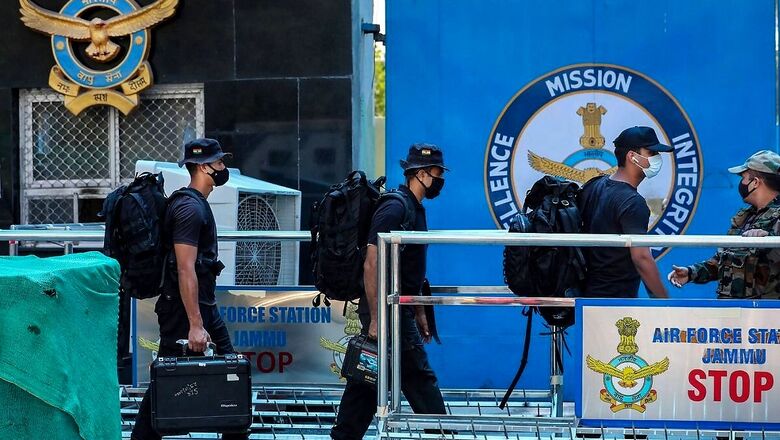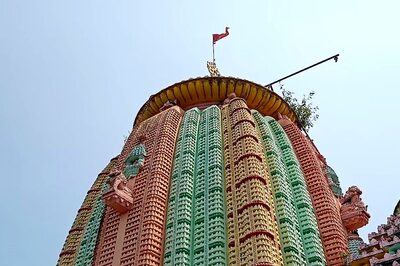
views
The use of drones to drop improvised explosive device at the Jammu airport’s technical area has shaken the security grid, with the possibility of RDX used in the IEDs adding to the anxiety.
Sources have told News18 that preliminary tests have revealed that RDX could have been used in the IEDs. “It looks like RDX but more tests are needed so samples have been sent to labs for forensic analysis. Reports will take 48-72 hours,” a senior officer in the security grid told News18.
The NIA charge sheet in the Pulwama attack case had said RDX was brought from Pakistan in batches and a car bomb assembled to kill 40 CRPF jawans in February 2019. About 35kg of explosives was used to trigger the Pulwama blast, NIA had said. Though Jaish-E-Mohammed and Masood Azhar were named as the mastermind of the Pulwama case, in the Jammu airport case, probe is also focussing on the role of Lashkar-E-Toiba offshoot The Resistance Front (TRF) at the moment.
A police officer part of the Jammu probe said the IEDs used were extremely sophisticated. “About 1.5 kg of explosives were used in each of the two bombs,” the officer said.
The IEDs were designed to be triggered off on impact. The NSG Bomb Data center, the NIA and the Jammu forensic team have all collected evidence from the ground to help probe the conspiracy.
Top central government sources said that they will wait for the probe and forensic test results before confronting Pakistan with evidence. Defence expert Major General Katoch said India must treat this as an act of war if probe conclusively establishes Pakistan imprint. “If an unmanned aerial vehicle from Pakistani soil entered India, then it is a violation of ceasefire. India must respond. If Balakot was not a deterrent enough for Pakistan, then a retaliation which acts as a deterrent is in order,” he said.
What we know so far
Around midnight, somewhere along the International Border and with aid from Pakistani Rangers, a drone was readied and loaded with IEDs and the GPS coordinates of the Jammu Air Base were fed.
One-and-a-half hours past midnight, at the technical area of Jammu airport, an IAF patrol spotted a blinking light in the sky. Their guard was up but before the patrol party could act, at 1:37 am, the drone dropped its first IED which tore through the roof of a barrack.
Two IAF personnel were injured as the splinters from the roof pierced through. Five minutes later, a second explosion occurred as the drone dropped its second payload.
Officials suspect that the Pakistan-based conspirators then recalled the drone as no evidence of it has been found on the ground. “99% it looks like the drone came from Pakistan. We have checked and concluded that none of the terrorists in Jammu and Kashmir have a drone or the capability to assemble one,” a senior intelligence official said.
Jammu police has lodged an FIR under UAPA Section 16 and 18, 23 IPC 307, 120 b and Section 3 of the Explosives Act for terrorism, terror conspiracy, enhanced penalty for using explosives to commit terror act, attempt to murder, criminal conspiracy and use of explosives.
Second IED recovered: terror attack averted
In a second case, a 22-year-old identified as Navid Ul Haq has been arrested for possessing an IED of 5kg. Police claim Haq was given the IED by The Resistance Front, an off-shoot of LeT to place it in a crowded Jammu locality to cause maximum damage. “So far, there is no link between Haq and the drone attack but he is being questioned to see if he has any information about the source of the explosives used in the drone attack by the conspirators,” a Jammu police officer said.
Read all the Latest News, Breaking News and Coronavirus News here.




















Comments
0 comment